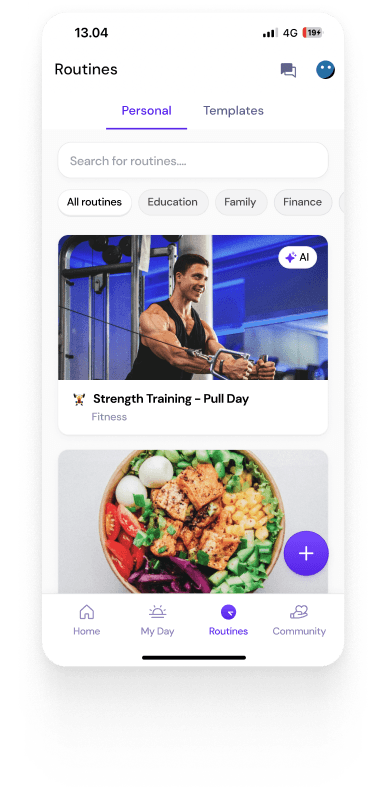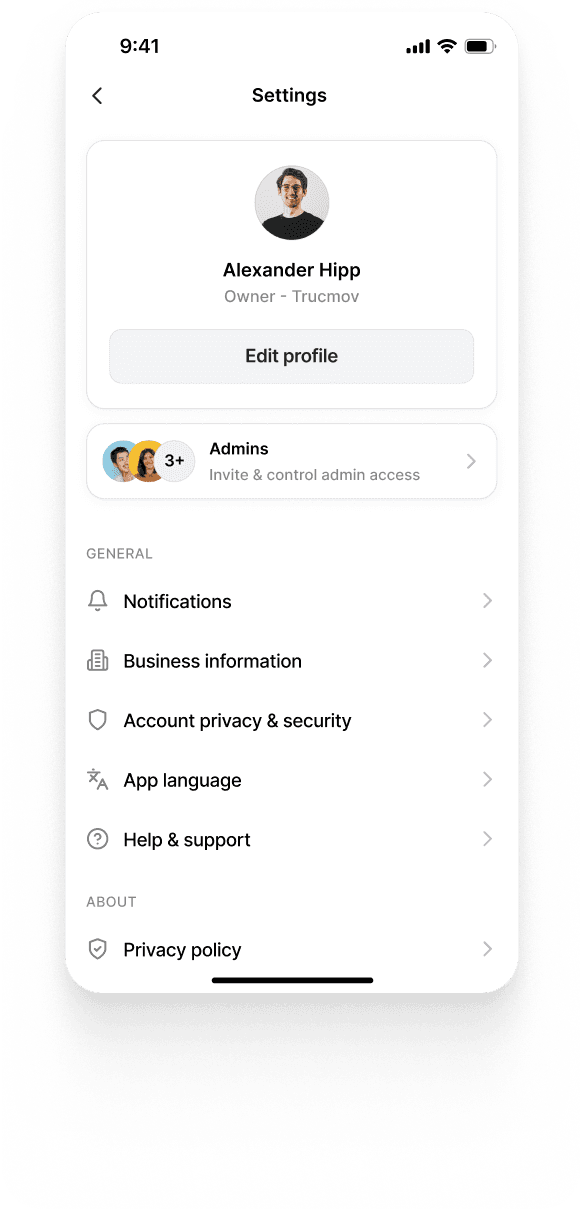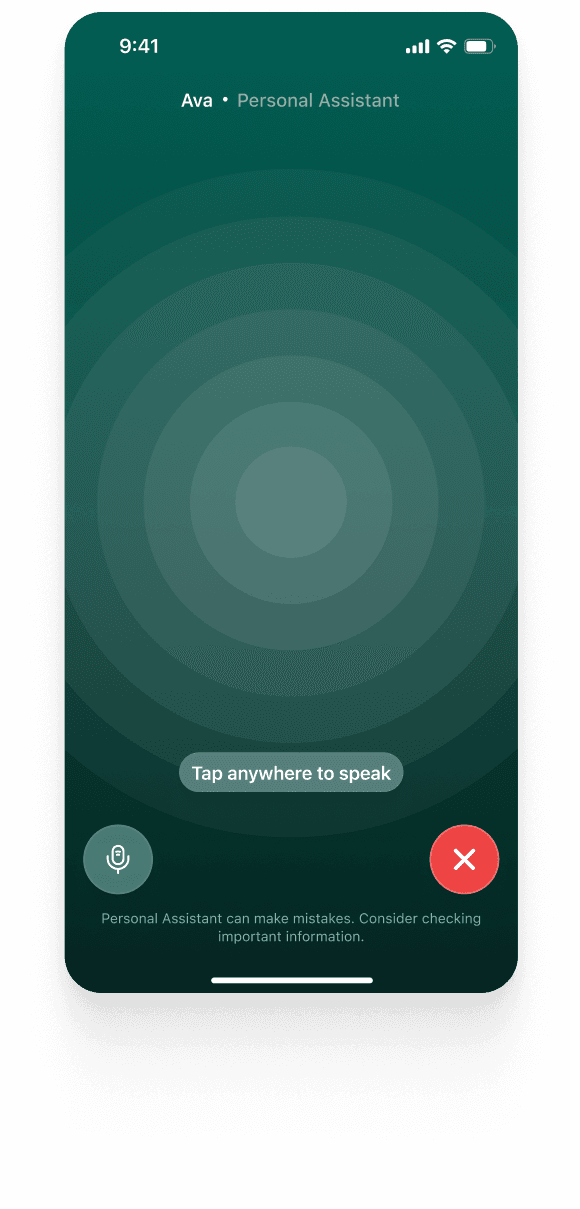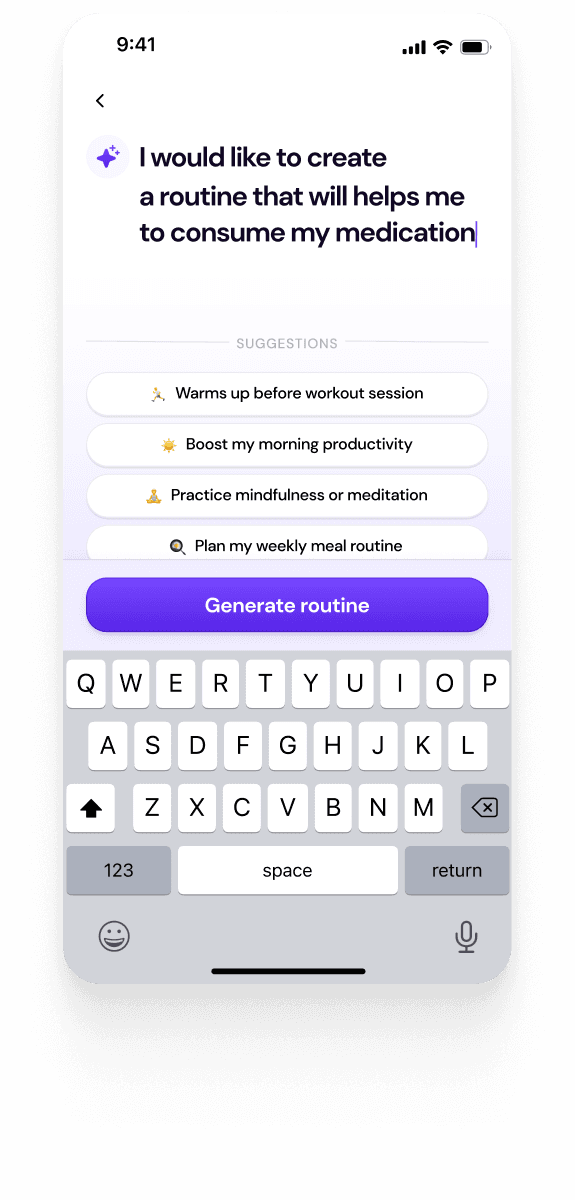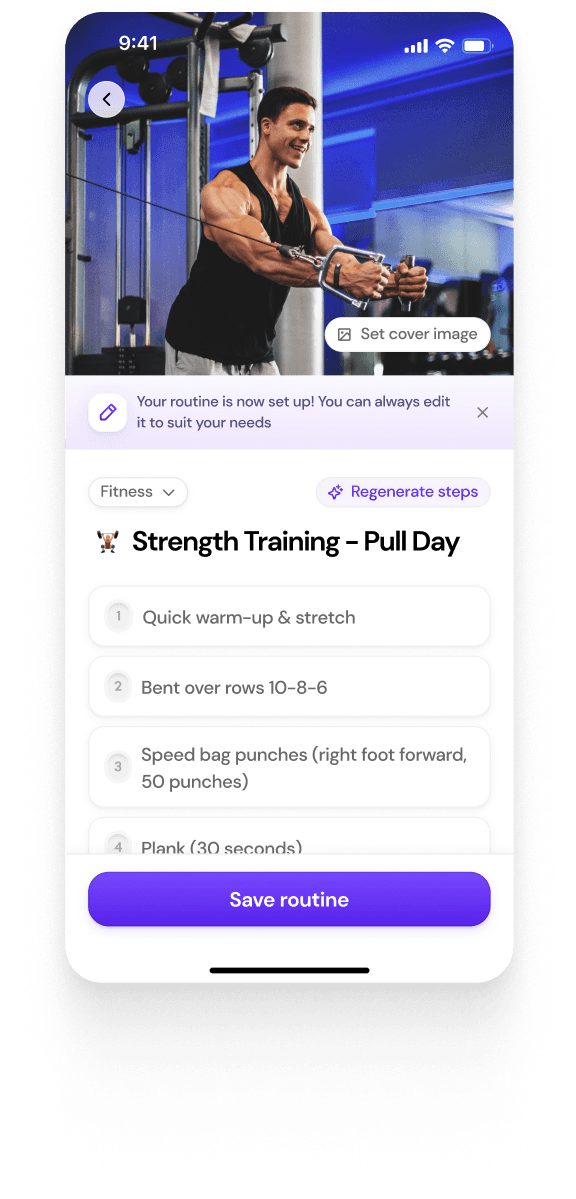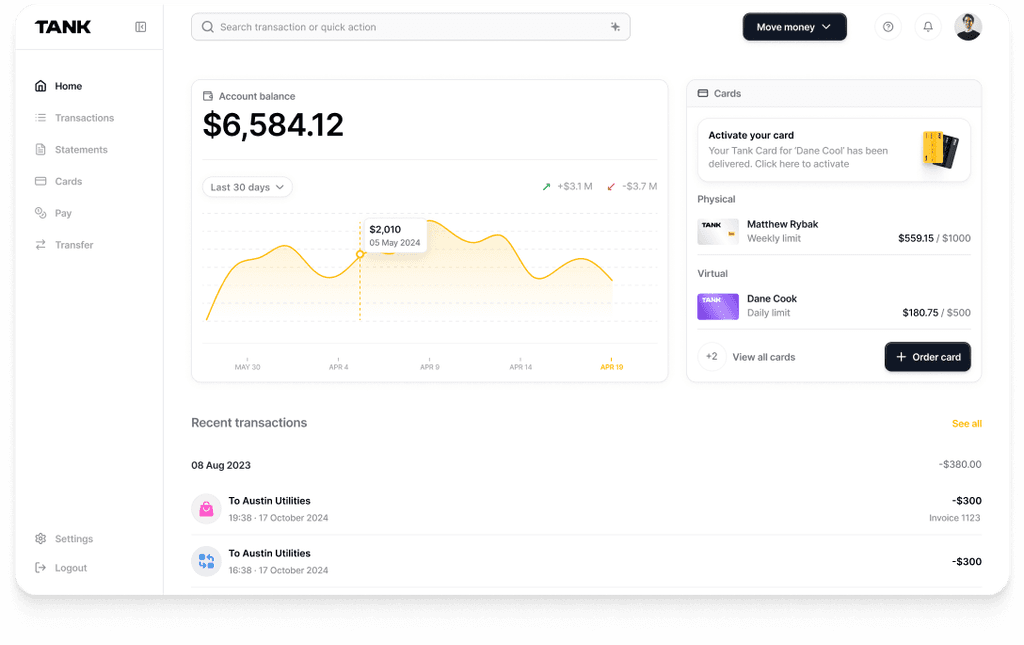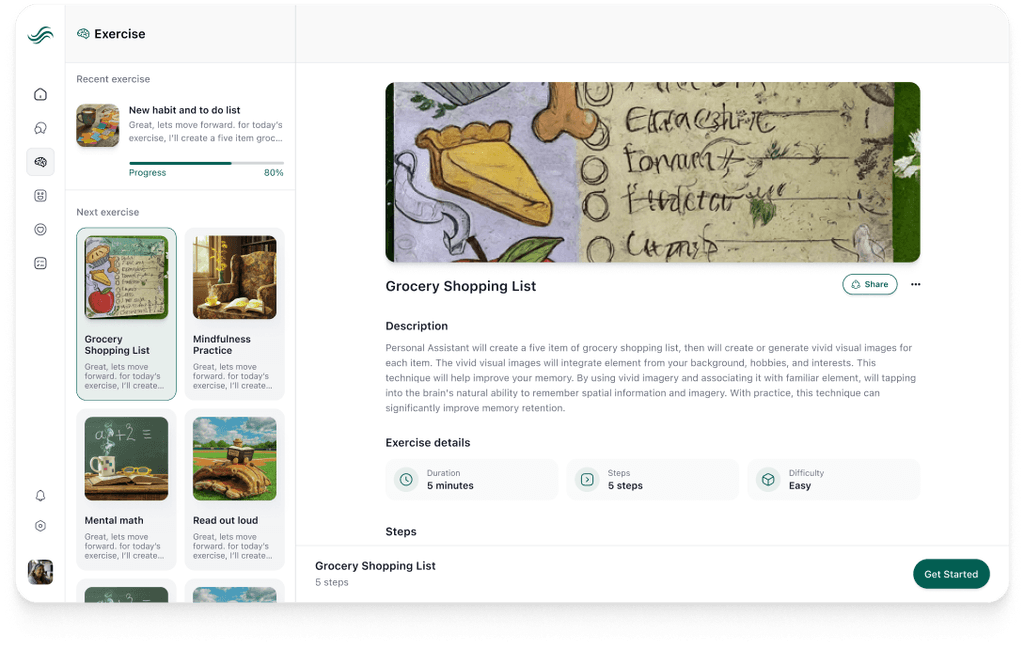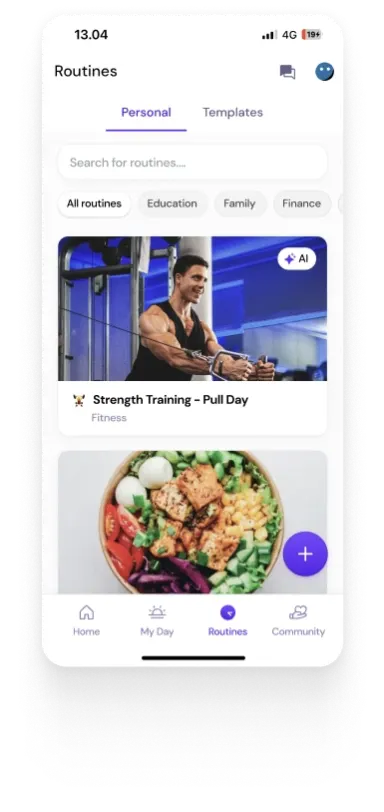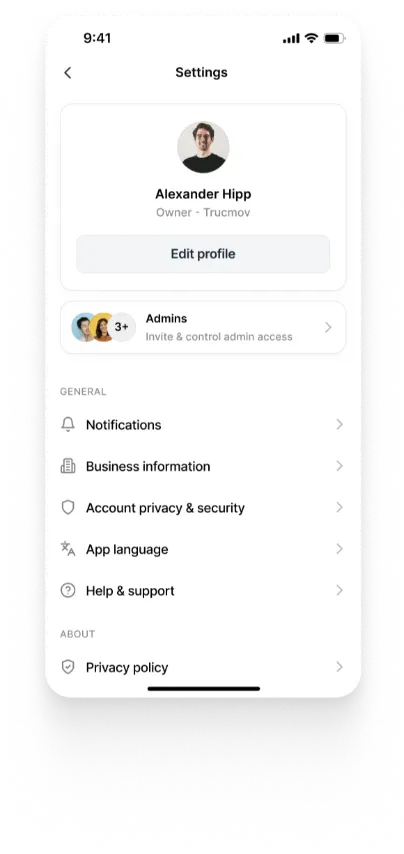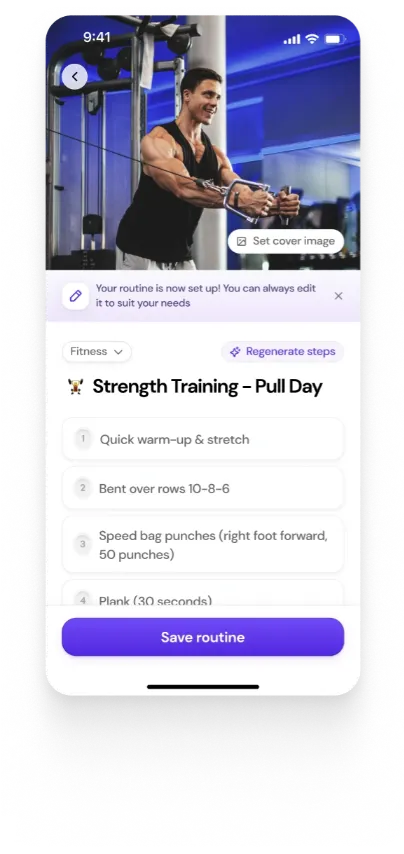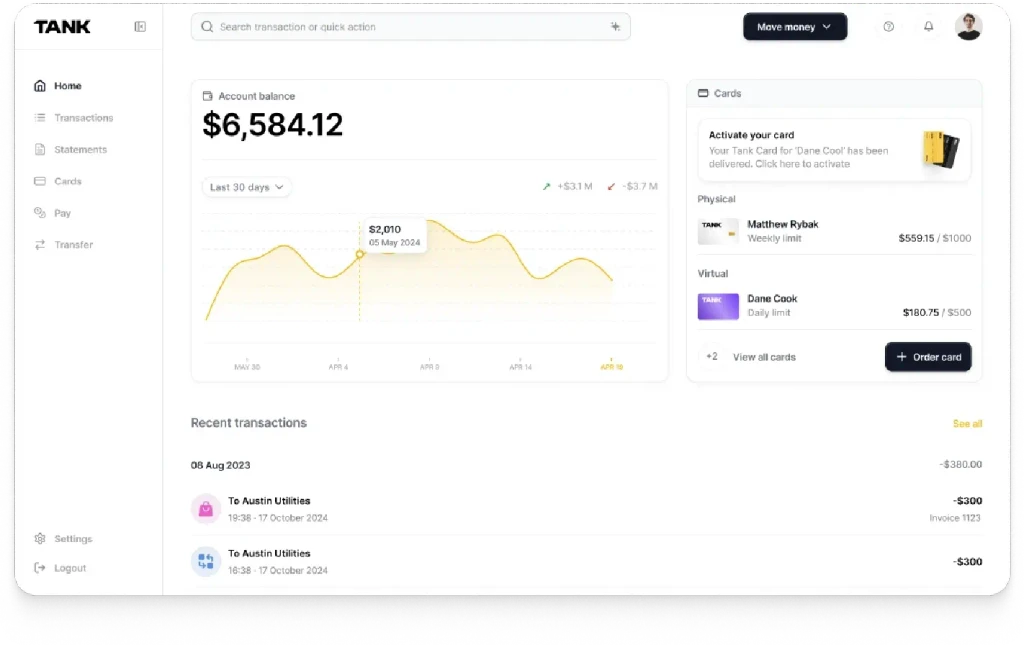The Impact of AI Operating Systems Across Industries: Use Cases and Applications
Summary
AI Operating Systems (AI OS) are transforming industries by embedding intelligence into workflows across manufacturing, healthcare, finance, and creative sectors. From predictive maintenance in factories to personalized patient care and AI-generated content, AI OS platforms like Steve streamline operations, enhance decision-making, and enable scalable innovation through seamless human-AI collaboration.
Key insights:
Cross-Industry Impact: AI OS platforms improve efficiency and innovation across manufacturing, healthcare, finance, and creative industries.
Smarter Workflows: These systems automate tasks, coordinate tools, and enhance decisions using real-time data and predictive models.
Steve Case Study: Steve, the first AI OS, showcases multi-agent collaboration for seamless engineering and product management.
Democratized AI Access: With natural language interfaces, AI OS platforms empower both technical and non-technical users.
Enhanced Decision Support: AI OS transforms complex data into actionable insights, aiding faster, better strategic decisions.
Generative Capabilities: In creative fields, AI OS platforms enable rapid ideation and content personalization at scale.
Introduction
Artificial Intelligence Operating Systems (AI OS) are emerging as transformative platforms that integrate AI capabilities at the core of software environments. An AI OS, in contrast to conventional operating systems, is able to learn, adjust, and get better over time in response to data and user interactions. This enables companies to create a workflow across many applications that is more intelligent, efficient, and intuitive. AI-driven operating systems are simplifying processes, cutting expenses, and giving businesses new capabilities in a variety of settings, including factories, hospitals, banks, and design studios. With specific use cases and advantages in each, we examine the effects of AI OS on a number of industries in this insight, including manufacturing, healthcare, finance, and the creative industries. Next, we demonstrate how a next-generation AI OS platform enables product teams with a case study of Steve: The First AI OS.
Manufacturing: Smarter Factories with AI OS
Manufacturing is being revolutionized by AI Operating Systems that act as the “brains” of smart factories. An AI operating system can optimize production schedules, monitor equipment in real time, and even autonomously coordinate entire assembly lines by integrating artificial intelligence with IoT sensors and robotics on the production floor. A more robust and effective production process that can adjust to shifting circumstances with little assistance from humans is the end result. Important applications and advantages of AI OS in manufacturing include:
1. Predictive Maintenance
AI OS platforms continuously analyze sensor data (e.g. temperature, vibration) from machines to predict breakdowns before they occur. Then, maintenance can be scheduled at the best times to prevent expensive unscheduled downtime. A World Economic Forum study claims that AI-powered predictive maintenance can drastically lower unplanned outages and reduce repair costs by about 30%. By doing this, factory equipment's lifespan is increased and production losses due to unexpected failures are avoided.
2. AI-Powered Robotics and Automation
An increasing number of advanced manufacturing robots are powered by AI controllers, which are essentially robot operating systems that allow them to react dynamically to task variations. A robotic arm with computer vision (an AI component), for instance, may identify a misaligned part on the conveyor and modify its motion appropriately. Under an AI operating system that coordinates numerous robots and machines in tandem, entire production lines can self-optimize their speed and workflow. By managing repetitive or hazardous operations, this intelligent automation improves worker safety while simultaneously increasing output and quality
3. Quality Control and Defect Reduction
AI OS platforms excel at pattern recognition, making them ideal for catching product defects in real time. By automatically detecting defects too subtle for human inspectors, machine vision systems may inspect products while they are being produced, rejecting defective units before they do further damage. The AI OS can even immediately adjust machine parameters to fix the problem if quality measurements begin to deviate from tolerance. According to research, AI analytics can increase defect detection rates by up to 50%, which lowers expenses associated with product failures and recalls. This kind of AI-driven quality assurance can significantly reduce waste and rework. To put it briefly, AI integration maintains high consistency by ensuring that only items that meet standards advance.
4. Supply Chain Optimization
Manufacturing does not happen in isolation – it has to do with client demand and supplier networks. By examining data on raw material inventories, logistics, and market demand projections, AI operating systems combine supply chain management and production planning. To avoid shortages or overstock, the AI may automatically modify industrial output and place just-in-time supply orders. For example, an AI operating system may recommend increasing production and rerouting shipments in response to a spike in demand for a particular product. Because resources are sent precisely when and where they are needed, a supply chain with this degree of data-driven coordination is more flexible and economical.
5. Innovation in Design and Processes
AI OS tools also enable new capabilities like generative design and simulation in the manufacturing process. By entering their objectives and limitations, engineers can use AI recommendations for the best possible product designs or process enhancements. In order to uncover effective solutions, the AI quickly iterates through virtual prototypes or workflow configurations—a process that would take an excessive amount of time to complete manually. Businesses may speed up innovation by incorporating these AI-driven design suggestions into the production system. In reality, this translates into ongoing process improvements on the manufacturing floor and quicker development of superior products. The AI OS efficiently offers a feedback loop that not only completes jobs but also continuously enhances their execution, resulting in significant increases in industrial productivity and inventiveness.
Healthcare: AI OS for Better Patient Care
Healthcare has embraced AI Operating Systems to help manage the growing complexity of data, devices, and AI tools in clinical environments. Within the current IT architecture, an AI operating system (OS) at a hospital can act as a unifying layer that organizes a variety of medical AI applications, such as patient monitoring systems and diagnostic algorithms. Hospitals use AI OS systems that seamlessly combine various solutions rather than introducing discrete AI tools one at a time. This way, physicians and staff can adopt AI into their workflows without having to completely redesign them. In reality, hospitals realize the need for such coordinated AI integration, and as of 2021, about 90% of them had an AI plan in place, up from 53% just a year earlier. Key use cases and benefits of AI OS in healthcare include:
1. Clinical Decision Support and Diagnostics
AI-powered diagnostic systems can analyze medical images, lab results, and patient records faster than human clinicians, often detecting patterns that might be missed otherwise. AI systems, for instance, may analyze MRIs or X-rays and identify urgent abnormalities (such a tumor or hemorrhage) in a matter of seconds, assisting radiologists in prioritizing crucial cases for quicker intervention. According to studies, AI programs like Aidoc can improve diagnostic effectiveness in emergency situations by helping to identify potentially fatal illnesses (such cerebral hemorrhages) early. Hospitals guarantee that these AI insights automatically reach the appropriate doctor with pertinent context by incorporating such technologies into an AI operating system, increasing diagnosis speed and accuracy.
2. Automation of Administrative Tasks
Healthcare professionals spend considerable time on routine administrative work, scheduling appointments, transcribing clinical notes, updating records, which an AI OS can significantly streamline. While speech-to-text AI can swiftly convert doctor dictations into medical records, intelligent scheduling bots can optimize appointment bookings and synchronize calendars. An AI operating system frees up physicians' time to concentrate more on patient care by automating these repetitive chores. To cut down on delays and manual hand-offs, Aidoc's clinical AI platform, for example, functions as an operating system that controls data flow between systems. When an AI model detects a finding (such as an anomaly on a CT scan), the result is sent right away to the relevant doctor with all relevant information. Hospital administrative strain and paperwork errors are reduced by this type of workflow automation.
3. Patient Monitoring and Personalized Care
With the rise of wearables and IoT health devices, there is a wealth of real-time patient data (heart rate, blood pressure, glucose levels, etc.) that an AI OS can continuously aggregate and analyze. Each patient's baseline habits can be learned in an AI-powered health operating system. The device immediately notifies medical professionals of a possible problem if a patient's vital indicators diverge from normal, such as an erratic heartbeat or a decrease in oxygen saturation. Early actions before symptoms worsen are made possible by this proactive monitoring. Furthermore, AI can assist in creating individualized care plans or identifying which patients would benefit from particular preventative actions by examining patterns in patient data. By guaranteeing that no important signal is missed in the deluge of health data, the AI OS effectively serves as a round-the-clock intelligent observer, facilitating more customized and preventive therapy.
4. Operational Efficiency and Resource Management
Hospitals are complex operations with high stakes for resource allocation. AI Operating Systems assist in optimizing these logistics, from managing drug inventories to forecasting patient admissions. An AI operating system, for instance, can forecast patient influx patterns by utilizing past data as well as outside variables like seasonal sickness trends. Based on these predictions, it can recommend changes to staffing levels or bed distributions. To avoid shortages, it can automatically initiate replenishment orders and monitor drug and supply usage rates. Health systems have achieved cost savings and increased efficiency by using AI to coordinate such choices since it minimizes waste and guarantees that resources are available where they are required. In summary, a healthcare AI operating system enables hospitals to "do more with less," preserving high standards of care despite financial and personnel limitations. AI has the potential to become a new standard of care because of its beneficial effects on clinical outcomes and operational performance, according to one industry analysis.
Importantly, all these improvements come with stringent requirements for privacy, security, and compliance in healthcare. In order to ensure that the advantages of integrating AI do not jeopardize safety or trust, AI OS systems are designed to protect patient data confidentially and adhere to legal requirements (such as HIPAA). Aidoc's corporate AI platform, which serves as a unifying operating system to coordinate numerous AI solutions (from different vendors) across hospital departments, is a well-known example of an AI operating system in the healthcare industry. This smooth unification of several AI tools on a single platform shows how an AI operating system (OS) may serve as the intelligent core of a contemporary hospital, managing everything from patient follow-up to imaging AI. Thousands of radiologists around the world are already aided by this system.
Finance: AI OS in Banking and Finance
The finance sector was among the earliest to invest in AI, and now “AI Operating Systems” for banks and financial services are accelerating innovation while shoring up security. An AI operating system serves as the intelligent center of a bank's IT ecosystem in this regard, automating transactions, keeping an eye out for threats, customizing customer support, and more—all while maintaining stringent regulatory compliance. More than 91% of American banks currently use AI in some capacity for fraud detection, demonstrating the broad adoption of this technology. Financial institutions are successfully transforming their software infrastructure into an AI-powered control center that can quickly support decision-making and manage massive data streams in real time. The following are some important applications and benefits of AI OS in finance:
1. Fraud Detection and Security
Detecting fraudulent activity quickly is critical to minimize losses and protect customers. More quickly than any manual examination, AI-powered fraud detection systems can examine millions of transactions across accounts to find odd trends or anomalies that could point to fraud. An AI operating system can rapidly compare transaction data with consumer profiles, device locations, and historical trends. Industry sources claim that contemporary AI systems can detect fraud up to 90% faster than conventional techniques, allowing for almost instantaneous reaction to suspicious activity. Banks are able to prevent fraudulent transactions and minimize damages virtually instantly by detecting fraud in seconds as opposed to days. Crucially, AI models also gradually adjust to new fraud strategies, increasing accuracy and lowering false alarms. Security in digital banking and payment networks, where threats are ever-changing, is significantly strengthened by this AI-driven monitoring.
2. Automated Trading and Investment Management
Financial markets move at lightning speed, and AI operating systems are increasingly entrusted with algorithmic trading and portfolio management tasks. Based on AI-generated methods, these platforms may execute trades or adjust portfolios in a matter of seconds after ingesting massive volumes of market data, news, and signals. On trading floors, for instance, hedge funds and investment banks employ AI OS-like systems that automatically purchase or sell assets within certain risk thresholds. The AI is capable of working around the clock, responding to market developments rapidly and grabbing opportunities (or hedging risks) far more quickly than human traders. Markets become more efficient as a result, and financial institutions are able to take advantage of little opportunities that would be impossible to detect by hand. Naturally, human monitoring establishes the objectives and risk thresholds, but the AI consistently maximizes the investment choices within those parameters. The net effect is higher trading efficiency and the ability to manage complex portfolios at scale, with AI handling the heavy analytical lifting.
3. Risk Management and Analytics
Banks manage various forms of risk, credit risk, market risk, operational risk, and AI OS platforms are supercharging these efforts. An AI system may create scenario simulations and predictive models for risk assessment by examining enormous datasets of market patterns, economic indicators, and consumer credit histories. An AI operating system for lending, for example, may rapidly assess loan applications by comparing them to learnt default patterns. This allows it to expedite low-risk approvals while flagging high-risk situations for more examination. AI models in the capital markets predict future changes in the market or stressful situations, assisting organizations in modifying capital buffers appropriately.This not only expedites decision-making but also increases accuracy by identifying minute correlations that humans might overlook. Industry estimates highlight the impact: by 2030, AI is predicted to save banks between $200 and $340 billion in expenses through increased efficiency and better risk management, while also generating up to $450 billion in new value through new products and improved analytics. These numbers demonstrate the growing importance of AI-driven decision assistance for maintaining financial competitiveness.
4. Personalized Banking and Customer Experience
Today’s customers expect personalized, on-demand services, and AI OS platforms enable banks to deliver just that.Numerous banks have implemented chatbots and virtual assistants driven by AI (often integrated as part of an AI OS) to conduct transactions, answer standard client questions, and even offer financial advice. For instance, an AI "financial coach" that examines a user's income and spending patterns and then provides personalized budgeting advice or product recommendations may be included in a banking app. These AIs for personal finance converse with clients in normal language, providing prompt answers to queries and assisting them in making wise choices. Because the AI can manage thousands of client interactions at once, reaction speeds and consistency are improved, resulting in a highly scalable yet personalized service. From the bank's point of view, this reduces operating expenses by taking work away from call centers while simultaneously increasing client happiness. AI-powered customization also extends to marketing; using predictive analytics, computers may target clients with the appropriate offers (loans, investment products, etc.) at the appropriate moment. All things considered, an AI operating system assists financial institutions in treating every client as an individual, increasing trust and loyalty through more intelligent service.
5. Regulatory Compliance and Reporting
The financial industry faces heavy regulatory requirements (KYC, AML, reporting standards). AI operating systems help by automating the creation of reports and compliance checks. To ensure that suspicious activity is detected and reported as soon as possible, an AI operating system, for example, can continuously check transactions against anti-money-laundering regulations or sanctions lists and flag those that do not meet the requirements. Additionally, it can automatically generate regulatory reports and audit trails from data, which reduces the amount of people required for compliance paperwork. Because the AI handles routine checklist activities, this degree of automation not only reduces the possibility of human error but also drastically lowers compliance expenses. Human expertise can therefore be redirected by banks to more intricate compliance challenges and strategy. Crucially, the AI OS always functions with the most recent regulations in mind since AI systems are updated to reflect these changes. AI OS platforms serve as a "always-on" compliance officer, assisting financial organizations in maintaining regulatory compliance while increasing operational efficiency.
In summary, AI Operating Systems in finance serve as an intelligent backbone that makes banking faster, smarter, and more secure. They make it possible to perform automation and real-time analysis at a scale that was before impossible. Intuit’s proprietary "GenOS" (Generative AI Operating System) platform, which the company developed to integrate AI into its financial software products, serves as a practical illustration. With Intuit’s GenOS, developers can quickly implement bespoke AI models for activities like fraud protection and tax guidance. Tens of petabytes of financial data were used to train the platform, which has significantly sped up Intuit’s development processes. This demonstrates how an AI operating system that is properly deployed may become a competitive differentiator in the financial industry, facilitating quick innovation while upholding compliance and trust.
Creative Industries: AI OS Unleashing Creativity
In creative fields, encompassing media, entertainment, design, and the arts, AI Operating Systems are opening up entirely new frontiers for content creation and creative workflows. Creative production has historically depended on labor-intensive procedures and human expertise. AI OS platforms can now act as cooperative creative collaborators, managing laborious duties and enhancing human artistic abilities thanks to the development of potent generative AI models (for literature, music, graphics, etc.). The emergence of generative AI tools in 2023 forced the creative sectors to adapt to a future in which AI is a standard component of their toolkit. These AI technologies are mostly enhancing human creativity rather than replacing it, enabling experts to create more, explore more quickly, and customize content in ways that were previously impossible. The creative industries are being impacted by AI OS platforms in the following ways:
1. Generative Content Creation
Modern AI OS platforms can integrate generative AI models (like image generators, language models, music composers) directly into creative software. This implies that a writer or artist can just explain a concept, and the AI will provide a draft illustration, design mock-up, or prose to work from right away. For example, graphic artists can significantly speed up ideation by using AI technologies to generate preliminary art designs or variations, which they can subsequently refine. AI can create storyboards or even artificially created characters and settings for use in film and video production. One noteworthy instance of generative AI in visual effects was when Hollywood studios employed AI-based effects to "de-age" an 80-year-old actor (Harrison Ford) on screen for a recent Indiana Jones movie. Creators can experiment with daring ideas, explore many variations at cheap cost, and eventually produce high-quality outputs more quickly by using an AI operating system to handle these generative powers within the creative workflow. While the AI manages bulk generation and suggestion, this enhanced creativity frees up human artists to concentrate on direction and subtlety.
2. Automating Repetitive Creative Tasks
Time-consuming technical tasks that do not always require inspiration are a part of many creative processes. Examples include formatting layouts, editing pictures, and cleaning up audio clips. AI operating systems, which function as a constant production assistant, are excellent at automating such tiresome or repetitive jobs. When it comes to video editing, an AI may automatically upsample and color-correct photos using learnt aesthetics or piece together uncut material into a basic sequence based on script cues. AI can complete graphic design chores like eliminating backgrounds from photographs, correcting lighting, or applying styles with a single command that would normally require hours of human labor. AI (Adobe Sensei and the new Firefly generative models) is integrated into software suites like Adobe's Creative Cloud, which can execute tasks like intelligent cropping and resizing and Content-Aware Fill in Photoshop, which removes undesirable items automatically. Creators may now achieve results in seconds that formerly required careful labor thanks to these AI features, which are efficiently managed by Adobe's AI platform across all of its products. The AI OS frees up creative workers' time to focus on developing the creative vision and polishing the material, rather than on tedious editing and drudgery.
3. Personalization and Creative Decision Support
Using data to inform creative choices and customize material to audience preferences is one of AI OS's newer capabilities in the creative industries. An AI OS, for instance, can evaluate user engagement data in marketing and advertising to recommend the design or messaging that is most likely to be resonant with the target audience. This effectively provides data-driven creative direction. AI can be used by content platforms to create a personalized experience at scale by tailoring the music or images that a specific user sees based on their behavior. Even in industries like game creation, AI-driven analytics can help designers determine which aspects of gameplay keep gamers interested, which might result in changes to stories or level designs. The impact of creative work is increased by this combination of analytics and creativity. Although they still have authority, creators can make decisions based on far more comprehensive knowledge (thanks to AI). According to preliminary research, this type of enhanced decision-making can raise the success rate of creative content by better matching audience preferences without compromising the creative process.
4. New Creative Mediums and Capabilities
Finally, AI OS is enabling entirely new forms of creative expression. For example, musicians are creating new genres of AI-assisted music by simulating instruments or creating melodies using AI co-composer technologies. AI and visual artists are working together to produce art that combines human and machine innovation; in fact, some art competitions have awarded prizes to AI-assisted pieces, which has generated controversy. Creators of all technical skill levels may connect with sophisticated creative tools by simply stating their needs thanks to these platforms' conversational or natural language interfaces. Imagine a non-designer being able to create a website layout that looks professional by only telling the AI OS what features and style they want. This lowers the entrance barrier for new creators. The possibilities are expanded by AI as a creative collaborator, including interactive narratives that adapt to human emotions, incredibly lifelike virtual worlds, and other experiences that are not feasible to create by hand on a large scale. AI OS platforms are at the forefront of coordinating these sophisticated creative workflows, which are the result of the fusion of human creativity and AI's generative potential.
It is worth noting that the rise of AI in creative domains has also led to important discussions about ethics, authorship, and job impacts. As evidenced by the recent Hollywood writers' strikes, concerns have been raised over copyright (for AI-generated content trained on human works) and the displacement of professionals by automation. There is growing agreement, meanwhile, that AI will support rather than replace creative employment, replacing monotonous work and acting as a tool while people concentrate on more complex creativity and judgment. In reality, businesses are implementing AI operating systems with safeguards, such as demanding human review and approval of material produced by AI and guaranteeing transparency. As these systems develop, creative professionals are discovering that they can do more creative work in less time and frequently for less money than ever before if they can properly use AI OS. That effectiveness and inventiveness can be transformative in the cutthroat creative industry.
Steve: The First AI OS
To illustrate the concept of an AI Operating System in action, let’s examine Steve, the first AI OS. Steve is a cutting-edge platform that combines engineering and product development processes under a clever, AI-powered roof. Software product teams can now design, develop, and manage products with previously unheard-of efficiency because of its fundamental architecture, which unifies many AI agents and tools into a single operating system. Steve essentially serves as a digital co-pilot for engineers and product managers, automating tedious tasks, offering data-driven insights, and making sure that every facet of product development is coordinated. Here, we describe Steve's architecture, value proposition, essential elements, and development plan for an AI operating system:
1. Architecture and Integration
Steve’s architecture is built as a fully integrated AI environment spanning the entire product lifecycle, and more. It coordinates work between engineering and product management by utilizing machine learning models, natural language interfaces, and a common knowledge base. Fundamentally, Steve employs a multi-agent AI framework, which can be conceptualized as a collaborative effort amongst multiple specialized AI assistants, each having access to a shared project memory. Steve's OS layer enables various agents to interact and exchange context, so for instance, one AI agent may manage code creation and review while another examines project schedules or user input. This produces a comprehensive system that can execute intricate processes (such as bringing a high-level product concept through to development and implementation) with few handoffs. Steve can easily interface with online, desktop, and mobile development environments because it is made to be platform- and device-agnostic. Additionally, it has an open integration layer (AI Marketplace) that allows third-party integration. Similar to how a conventional operating system adds new apps and drivers, Steve may develop and integrate additional AI capabilities over time thanks to its adaptable, scalable design. From a technical perspective, Steve's cloud-native architecture enables it to grow resources as needed, whether it is for processing massive datasets or putting up extra test environments, giving product teams of any size a strong foundation.
2. Core Components – Vibe Studio
Vibe Studio is one of Steve's key elements. This is a platform-integrated AI-powered development tool that assists engineers in writing, comprehending, and optimizing code. Similar to sophisticated pair-programming, Vibe Studio can use natural language descriptions of functionality to build code fragments or even complete modules. Over time, its recommendations get better since it keeps learning from the project's codebase and best practices. In addition to generating code, it helps with testing and debugging by automatically detecting errors, making recommendations for improvements, and producing unit tests. The assistant significantly cuts down on the amount of time developers spend debugging by analyzing the context and identifying possible causes when a build fails or a performance issue is noticed. By keeping track of decisions and code modifications, it also guarantees job continuity. For example, if a developer requests that the AI rework a section of code, the assistant will remember the rationale behind the change and how it was implemented, which will be useful if comparable problems later occur. Steve's Vibe Studio frees up human engineers to concentrate on designing features and resolving more complex issues by managing repetitive programming duties and identifying mistakes early. In essence, Vibe Studio integrates the speed, precision, and learning that artificial intelligence promises into the regular coding process.
3. Core Components – Product Management Intelligence
Complementing the engineering side, Steve provides a Product Management Intelligence module for product owners and managers. This AI element functions as a co-pilot for an intelligent project manager. With just a basic description of a product idea, it may automatically create task lists, user stories, or specification drafts. Planning becomes increasingly data-driven by forecasting deadlines and resource requirements for new features through the analysis of past project data and market information. By integrating with tracking tools, the Product Management Intelligence keeps an eye on the project's progress and can notify the team of any potential bottlenecks. For instance, if testing is revealing too many problems or if development on a crucial feature is taking longer than expected, the AI will identify the problem and even offer potential solutions (such as adding a sprint or reordering tasks). Additionally, it analyzes usage statistics and user comments. Steve may use app reviews, support requests, and user telemetry to find prevalent problems and then suggest new features or product enhancements based on that information. In essence, this part transforms a mountain of data into insights that the product team can use. Another aspect is quality and risk management. Steve's AI monitors measures like team velocity, performance benchmarks, and bug rates and utilizes them to determine whether the product is deviating from its goals. By ensuring that nothing crucial is overlooked and that strategic decisions are well-informed, all of this enhances the human product manager's talents. These wise recommendations can help product managers of all skill levels make better decisions more quickly.
4. Empowering Teams of All Skill Levels
Steve was created with the primary goal of enabling everyone, regardless of technical expertise, to access powerful AI capabilities. Steve's use of natural language interfaces enables team members to communicate with the system using straightforward text or voice commands, much like they would with a colleague. This makes it possible for marketers, designers, product managers, and other non-technical professionals to use AI technologies for their everyday activities without requiring technical fluency or coding skills. Steve gives people who previously had restricted access to tremendous skills, whether they are creating reports, compiling customer input, or automating repetitive tasks.
Steve also increases the efficiency of technical teams by automating monotonous work and bringing up pertinent information when it is most needed. To save up time for more strategic work, developers may trust Steve to manage code scaffolding, debugging, or even project planning. Engineers and non-engineers can work together in a common area thanks to the platform's AI, which recognizes and adjusts to each user's function. Steve does more than just encourage cross-functional work in this way; it enhances it, enabling teams with varying degrees of expertise to collaborate more effectively, move more quickly, and produce greater results.
Conclusion
In conclusion, AI Operating Systems are reshaping industries by embedding intelligence into the core of everyday workflows—from factories and hospitals to financial institutions and creative studios. These systems are not only automating complex tasks but also enhancing decision-making, personalization, and innovation. As demonstrated by platforms like Steve, the future of work will be defined by seamless collaboration between humans and intelligent systems. With the right implementation, AI OS platforms hold the potential to drive efficiency, creativity, and strategic value at an unprecedented scale.
Authors
Explore the Power of Steve
Ready to transform your product workflows with AI? Discover how Steve, our intelligent operating system, empowers teams to design, build, and iterate faster with AI-driven insights and automation.
References
Andre, Dave. “AI in Finance Statistics 2024: Impact, Future Trends & Key Insights.” All about AI, 15 May 2024, www.allaboutai.com/resources/ai-statistics/finance.
Bhandari, Abhiyan. “Revolutionizing Radiology with Artificial Intelligence.” Cureus, vol. 16, no. 10, 29 Oct. 2024, pmc.ncbi.nlm.nih.gov/articles/PMC11521355/, https://doi.org/10.7759/cureus.72646.
istecadmin. “The Importance of Predictive Maintenance — Istec.” Istec, 6 Mar. 2018, www.istec.com/the-importance-of-predictive-maintenance.
Malec, Melissa. “How AI as an Operating System Is Shaping Our Digital Future.” HatchWorks, 6 June 2024, hatchworks.com/blog/gen-ai/ai-driven-operating-systems/.
“O3ai | Article - AI-Powered Quality Assurance: Reducing Defects through Automation.” O3ai.com, 2021, www.o3ai.com/articles/ai-powered-quality-assurance-reducing-defects-through-automation.
Pollen, Andy. “AI Operating Systems for Healthcare | Future of Hospitals.” Healthcare AI | Aidoc Always-on AI, 15 Dec. 2021, www.aidoc.com/learn/blog/ai-operating-system-future-of-hospitals.
Team, Exadel Marketing Technology. “Adobe Generative AI Overview.” Exadel, 8 Aug. 2023, exadel.com/news/adobe-generative-ai-overview-features-empowering-creativity.
“What Is Intuit’s GenOS? | by Digital First.” Digitalfirst.com, 2023, www.digitalfirst.com/news/what-is-intuit-gen-os.
Whiting, Kate. “How Is AI Impacting and Shaping the Creative Industries?” World Economic Forum, 28 Feb. 2024, www.weforum.org/stories/2024/02/ai-creative-industries-davos.














